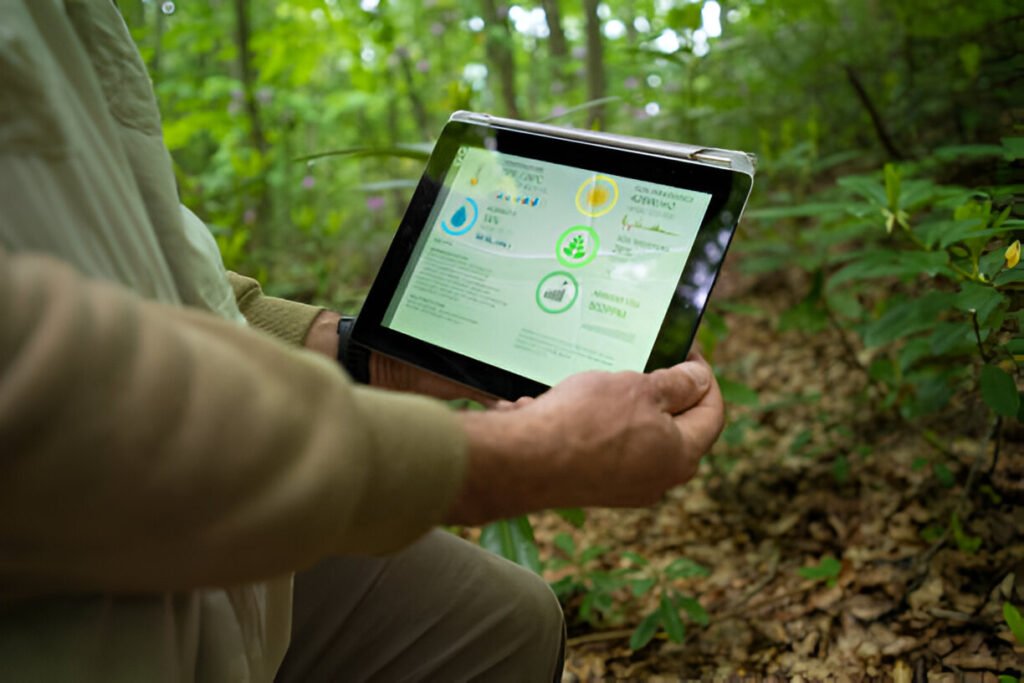Climate change is now one of the biggest threats we are experiencing today in various aspects, such as weather patterns and food production. Did you know that this technology sector plays a very important role in the fight against climate? From renewable energy solutions to advanced data analytics, technology has shaped understanding and management of climate change impacts. Now, let us leap into how technology makes the difference and how our planet is expected to end.

1. What is Climate Change?
Climate change refers to long-term changes in temperature, weather patterns, and other atmospheric conditions. It’s largely driven by human activities, such as the burning of fossil fuels, deforestation, and industrial processes, which release greenhouse gases like carbon dioxide (CO2) into the atmosphere.
2. Heightening Power of Global Warming
The effects of climate change are becoming increasingly visible. Rising sea levels, more intense hurricanes, droughts, and melting polar ice are just a few of the alarming indicators. These changes affect ecosystems, human health, and economies. Without action, the consequences will only worsen.
3. How Technology Helps Understand Global Warming
Among some of the first things to be done in mitigating climate change is taking a sharper look at the phenomenon, and here again is technology. Satellites monitor the atmosphere of the Earth, studying the temperature changes and ice cover patterns. Advanced sensors and remote sensing are aid scientists in collecting tremendous environmental data so they can have a more penetrating view of how climate change is moving.
4. Renewable Energy: The Power of a Green Future 4
Technology has given us renewable sources of energy: the Sun, wind, and hydroelectric power; and it cuts our fossil fuel consumption. Besides providing electricity, it cuts down greenhouse gas emission. Windmills and solar panels have symbolized clean energy. New technology in the development of energy storage is making the choice for renewables viable and less expensive.
5. Electric Vehicles: Reduce Carbon Footprint
Another technological change that is under fight from climate change is electric vehicles, or EVs. While traditional cars burn gasoline in order to reach their goal of transporting passengers, EVs function on electricity, no tailpipe emissions; as better battery technology comes along, EVs are becoming ever more efficient, affordable, and accessible to cut down our carbon footprint and dependence on oil.
6. Data Analytics in Climate Change
Data forms the most critical aspect of climatic trend analysis and future prediction of changes, by big data and advanced analytics, climate scenario modeling, extreme weather events, and informed decision-making can be approached in climate science and policymaking. For example, analysis of weather station data, ocean buoy, and satellite data analysis to forecast the probability of a hurricane or flood.
7. AI and ML in Climate Solutions
Climate behavior in the guise of big data is analyzed, and patterns are produced by artificial intelligence and machine learning. AI assists in optimizing energy usage in buildings, predicting environmental changes, and even helps them build new, more efficient renewable energy systems. AI-based models are giving researchers a potent tool for making far better projections of the climate.
8. Green Technology Innovations
Carbon capture and storage, along with biodegradable material, developed green technologies. Carbon capture captures CO2 at its source and stores it underground so that not much escapes into the atmosphere. Newer innovations, such as plant-based plastics and eco-friendly packaging reduce industrial process impacts.
9. Role of smart grids
Smart grid represents some of the newest energy systems that are monitored and tracked through digital technology in their supply of electricity. Moreover, smart grids can find application in integrating renewable sources of energy and reducing power cuts so there is effective delivery of energy. This will ensure reduction of carbon footprints associated with electricity production as well as usage.
10. Challenges and Limitations of Technology
While technology is a powerful tool in combating climate change, it’s not without its challenges. Developing new technologies can be costly, and scaling them for widespread use often takes time. Additionally, the production of certain green technologies, such as batteries for electric vehicles, has its own environmental costs. It’s important to balance technological advancements with sustainable practices.
11. Global Collaboration Through Technology
Climate change is a global problem, and technology is helping bridge gaps between countries. International collaboration platforms and climate data-sharing initiatives allow countries to work together in real-time. Platforms like the United Nations Framework Convention on Climate Change (UNFCCC) use technology to bring nations together to create unified strategies for combating climate change.
12. The Future of Technology in Combating Climate Change
The future of technology holds immense potential in combating climate change. From advancements in renewable energy to AI-driven climate models, the next decade will likely see a surge in innovations. Emerging technologies, such as fusion energy and bioengineering, could revolutionize how we produce energy and mitigate the effects of climate change.
